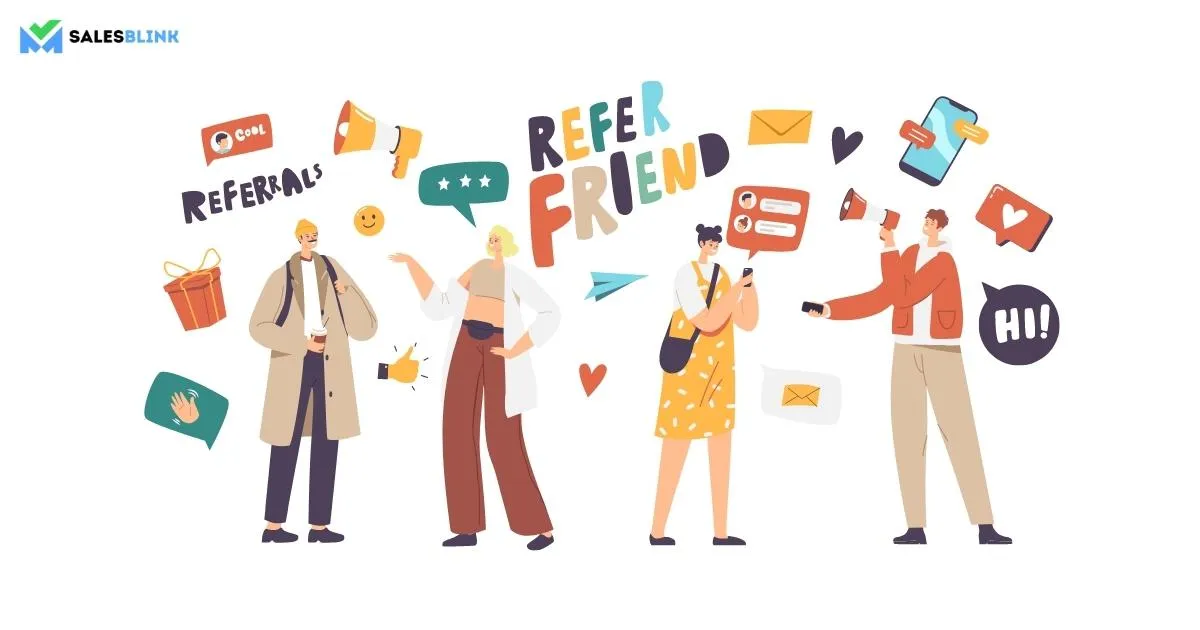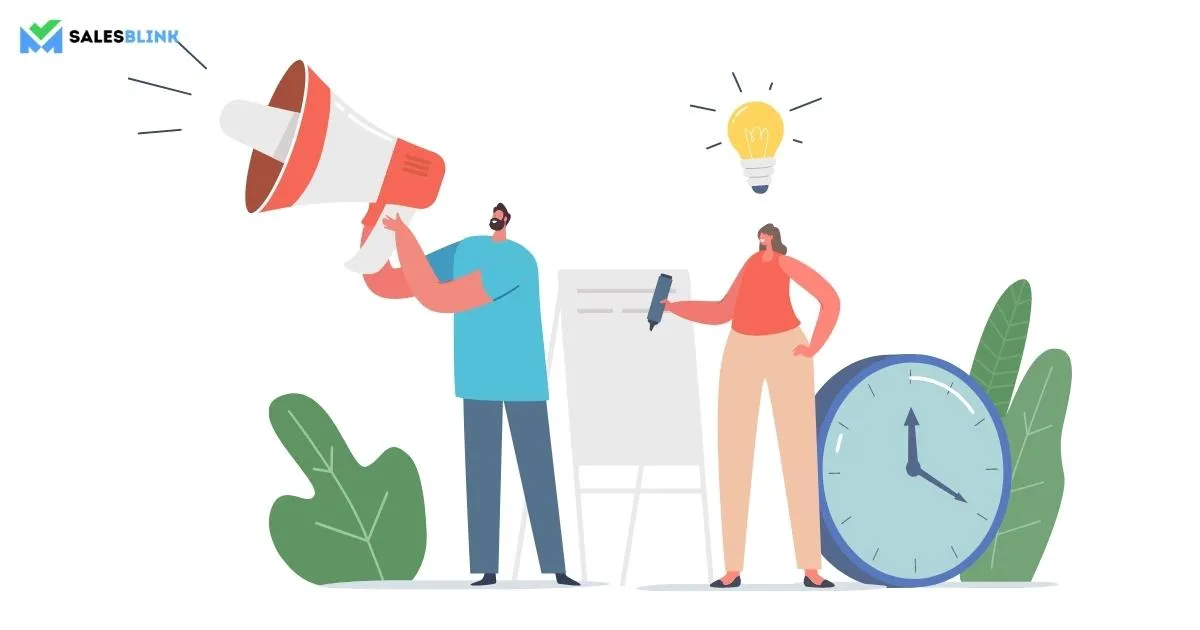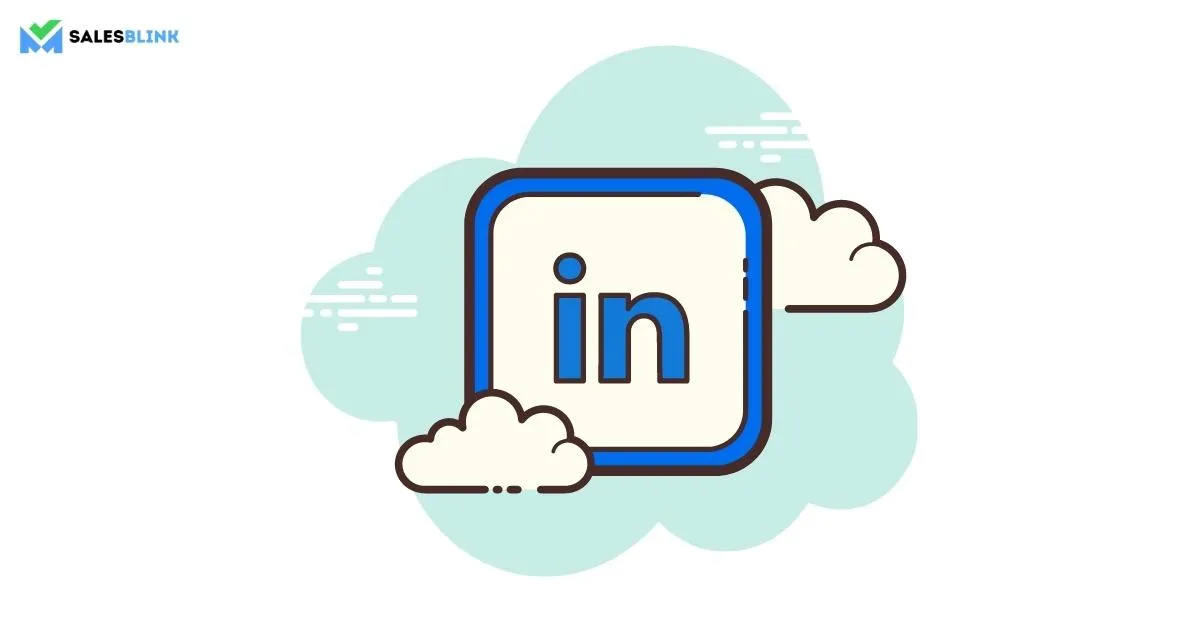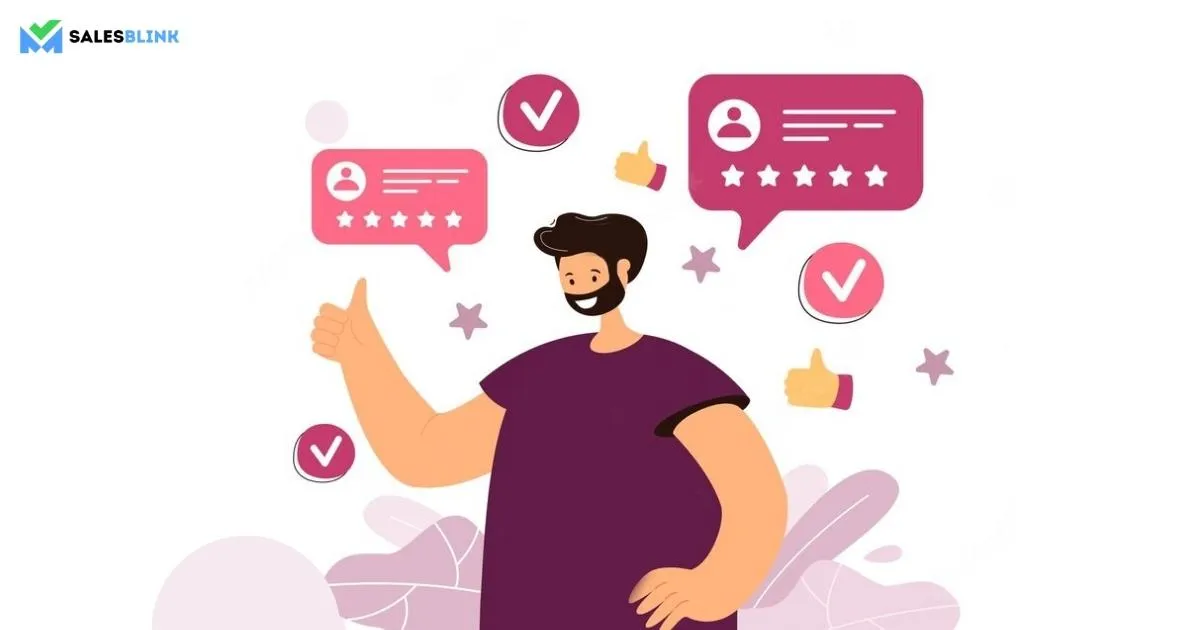15 Best Tips To Get High Quality Sales Referrals
Gaining the trust of prospective customers and turning them into buyers is a major challenge in the modern business world, especially if you are a new business & are trying to compete with popular and trusted brands.
But there’s a shortcut called “sales referrals” that’ll instantly build trust and put you in the good books of your customers, helping you convert them quickly and cost-effectively. Referrals bring 30% more conversions, with these converted customers having 16% higher lifetime value!
A sales referral is the information your satisfied customers give you about other people they know who may find your offerings useful. You can mention that your existing customers found the product or service useful while reaching out to referred prospects.
So, are you ready to reap the benefits of sales referrals? This blog will help you start by covering all the essentials of sales referrals and the key tricks on how to get referrals in sales. Let’s go!
Table of Contents
- What Is a Sales Referral?
- Why Are Referrals Important In Sales?
- Who to ask for sales referrals?
- How to ask for sales referrals?
- When To Ask for a Sales Referral?
- How to increase sales referrals?
- What Are The Top Sales Referral Tips?
- 1. Ask for introductions instead of new business
- 2. Be an active referral giver
- 3. Go beyond the expectation
- 4. Simplify the task of providing referrals
- 5. Engage existing customers
- 6. Use LinkedIn
- 7. Give customers a reason to talk about you
- 8. Leverage every opportunity that comes across
- 9. Consider the customer profile
- 10. Have your script ready
- 11. Create impressive blog content
- 12. Create a customer referral program
- 13. Give the right incentives
- 14. Stay aligned to your customer’s values
- 15. Nurture leads
- FAQs
What Is a Sales Referral?
A sales referral occurs when an existing customer provides a sales representative with the name and contact information of a prospective customer he/she knows. It is a cost-effective prospecting method used by salespeople to generate the most qualified leads that you can convert quickly. Sales reps usually ask for referrals just after a successful sale or at various points during their relationship with a customer.
Sales referrals work by bridging the trust gap between you and the referred prospect. This is because people will likely trust you if they hear about you from their friends or family.
Why Are Referrals Important In Sales?
Sales referrals are one of the most efficient prospecting techniques because they provide a personal connection with new prospects by mentioning that someone known to the new prospect has suggested the offering to him/her.
It leverages the goodwill existing between the person making the referral and the person they are referring you to. When you reach out to that referred person, they will already have confidence in you, your company, or your product because of the mutual contact. So, building trust would take much less time, cost, and effort if you have a referral. Moreover, a referral helps find the most qualified leads easily, as the referring customers will refer only relevant people who can benefit from your offering.
Hence, referred prospects move through the purchase process much faster and offer a higher conversion rate than cold opportunities. In fact, sales referral statistics indicate that people are four times more likely to buy your offering when it is referred by someone they know and trust. Without a referral, you may be a complete stranger to that prospect and spend a lot of time and money convincing them with uncertain results.
So, you can get high sales from referrals (or referral sales) at a relatively lower time, effort, and cost. And this will boost your marketing ROI greatly!
Who To Ask For Sales Referrals?
You are likely to get high-quality referrals once the relationship between you and the one giving it is strong. But how do you know if your relationship is strong, you may ask?
You can determine this strength by auditing your current customers and assessing your relationship with them on these criteria:
- Time period of relationship
- Frequency of communication between you and the customer
- Speed of customer’s response to your communications
- Overall satisfaction with your product or service
Customers who score high on these relationship factors are excellent candidates to ask for referrals as soon as they show satisfaction with your offering or appear impressed.
How To Ask For Sales Referrals?
Customers often hesitate to provide salespeople with their friends’ names and contact information. So, your rep must ask for referrals in a way that motivates the customer to share such information instead of increasing hesitation or harming your relationship with them.
This requires that you make a subtle request once the customer has had a good experience with the product or service. Moreover, you must convince the customer that he is helping the referred person with questions such as “Since you have benefited from using our offering, who else do you know who would need it or benefit from it?”
Furthermore, you can apply these six key tactics to ask for referrals successfully-
- Ask for referrals once the customer has benefited from your product/service or given you a compliment.
- Ask the customers for help instead of instructing them.
- Make it easy by keeping your request specific, and prepare a short description or template of the referral you want in advance so the customer can help you quickly.
- Use LinkedIn to find out who your customer is and who their LinkedIn connections are.
- Link the referral to the new prospects by using the referring customer’s name in your messages.
- If your relationship is extremely strong, you may ask the customer to make the initial introduction!
- Thank the customer for giving you referrals and keeping them updated on your progress.
- Nurture your best referral givers through incentives and gestures of appreciation.
These tips can help you get several referrals. However, not all referrals will be relevant! You may often get an appointment with the referred person due to their relationship with the referrer, but that doesn’t mean they are your ideal customers or they have any intention of buying your product or service. So, you must still carefully qualify the referred opportunities by analyzing them instead of contacting them immediately.
When To Ask for a Sales Referral?
You must ensure a strong relationship and high customer satisfaction before requesting for the referral. Generally, the best time to ask for referrals is after you have proven your product’s or service’s value to the client or the client shows satisfaction.
Along with a thank you message for the purchase (where applicable), you can invite buyers to offer contact details of friends who may be interested or recommend/gift the product to people they know.
Some instances during the sales process when you must request a referral are when the customer-
- Gives you an excellent net promoter score or high product/service ratings.
- Makes enough purchases to be considered a loyal customer.
- Engages with your brand positively by liking posts about your offerings, subscribing to your newsletter, sharing products on social media, showing satisfaction, complimenting you, or other favorable actions.
How to increase sales referrals?
Wondering how to increase referrals in sales? Here are some of the best ways:
- Exceed the expectations of your customers
- Adopt a customer loyalty program
- Keep your existing customers engaged
- Provide a template for referrals
- Make the customer experience positive and easy to share
- Leverage LinkedIn to grow your network
- Adopt a customer referral program
- Offer incentives in exchange for referrals
- Create avenues that allow customer advocacy for your brand
- Align with your customers’ values
- Act on positive feedback from customers
- Distribute your content across different channels
- Refer to the strategies of competitors
- Look for opportunities to get a referral at all times, especially after making the sale
What Are The Top Sales Referral Tips?
Let us now discuss the top sales referral tips that will help you get high-quality referrals from existing customers for free! Here are some tried and tested tricks you should apply while asking for referrals to maximize your chances of getting relevant and qualified referrals-
1. Ask for introductions instead of new business
Ask people for general introductions of others who fit your buyer profile and request only the most important contact detail(s) while showing a primary intention to help and not sell. You must avoid making your request too intrusive, demanding, or business-like, as that may dissuade people from sharing referrals.
A good example of asking for a referral is- “Hey John, we’ve got a great new feature coming out that can help with [add key purpose]. Do you know someone who would find this helpful?”
2. Be an active referral giver

One of the less popular but effective sales referral best practices is to give referrals. Giving referrals will help you associate with customers better when you request them for referrals while leaving the impression that you practice what you preach! Moreover, providing good referrals can also get you referrals in return, especially when dealing with other businesses.
3. Go beyond the expectation
Do you want people to recommend you to others even without you asking for referrals? Word of mouth is the most powerful way to propel unsolicited referrals for your company. This is largely dependent on loyalty, which means you must earn your customers’ trust and goodwill by satisfying them with high-quality offerings, personalized gestures, and customer service.
Moreover, you must go above and beyond for your customers by sharing their content on social media, citing them in your content, and proving to be a valuable resource for them. Once you delight your customers with these steps, they will tell their network about you on their own.
4. Simplify the task of providing referrals

Create a form that customers can send to their peers with referral information about your company. You may include this as an email template, a form on your company’s website, or a form with the purchase receipt. And this would prompt customers to share referrals by introducing the idea while simplifying sending referrals.
Moreover, you should use automation to create a dashboard where your customers can track their referrals, ask questions, and check their rewards.
5. Engage existing customers
You should continue investing in every relationship you make by providing ways to keep customers engaged with your brand. This would keep your brand at the top of your customers’ minds, increasing the chances that they would suggest you to others. Here are some tips for maintaining customer engagement-
- Stay in touch post-sale and nurture the relationship to form a lasting connection.
- Provide an active community and share a set of values.
- Continue to provide value through additional offerings, helpful content, and regular check-ins.
6. Use LinkedIn

LinkedIn is a large social network of professionals that offers a free method of obtaining referrals through networking. Moreover, LinkedIn’s Advanced People Search feature makes it easy to find qualified second-degree connections to which your customers may introduce you.
To begin, click the search bar at the top of the page, and select ‘People’ from the drop-down menu. Here, you can filter your search by second-degree connections or specifications like industry, title, keywords, and location to create a list of referral opportunities. This will help you find the best referral candidates to bring up to your customer.
7. Give customers a reason to talk about you
You should get your existing and potential customers excited and talk about your business online. This will create opportunities where they may speak favorably about your business with relevant prospective customers, and this will naturally develop referrals! You can get people talking about you with the help of special events, webinars, high-quality offerings, giveaways, exceptional customer service, and engagement.
8. Leverage every opportunity that comes across

You should always be looking for the right time to ask for a referral. Some examples of opportunities are when you just wrote an insightful tweet or a LinkedIn update about your service. Such occasions are perfect to ask them to introduce you to somebody they know who fits your customer profile.
9. Consider the customer profile
You need to know who you are talking to and looking for while forming your referral strategy to generate high-quality referrals quickly. So, you must start with customer research and profiling and plan the right questions to ask customers when requesting referrals. You should also decide the criteria to filter referrals based on the profile, so you don’t waste time on the wrong referrals.
10. Have your script ready

Try to always have specific go-to scripts for clients, partners, vendors, etc., to make asking for referrals easier. For example, a script for getting referrals from a business client may be: “We have had a lot of success helping software companies improve their sales cycles. Do you know someone who works in a software company that can benefit from our service?”
11. Create impressive blog content
Writing high-quality content on your blog can make you a thought leader in your industry, and others will want to share your message. Write a fantastic blog post that informs and helps your target audience, share it online, and ask others to share it. If you become known for helping people through your content, your readers will eventually send people your way for your offerings and solutions. This trick will lead to automatic referrals from your blog for free.
12. Create a customer referral program

Adopting a customer referral program is an effective method for your team to acquire new referrals proactively. A referral program increases your credibility by showing that you have a proper system and are confident enough to know that a referral program is a wise investment.
As a result, your customers will feel more comfortable sharing information about their peers because you have an organized and secure system in place. In addition, when customers are offered a planned incentive as part of your referral program, they’re more likely to trust you and follow through with their recommendations. They will also feel motivated to make further suggestions over time.
13. Give the right incentives
Offering rewards can reduce reluctance among prospective referrers Moreover, tiered incentives or prizes would do better than a standard reward as they would encourage more referrals by offering a higher reward.
You can start by offering small cash prizes and vouchers when customers begin their referral marketing. Then, you can raise the stakes and provide big prizes for the top performers in your referral program. Offering rewards based on demography, behavior, and purchase history is another great way to attract more referrals.
So, you should conduct a thorough study, find the ideal incentive, and ensure that you get more referrals as the size of the rewards increases. Moreover, you must moderate the incentives to ensure that your customer acquisition cost is sufficiently lower than your average customer’s lifetime value. Incentives that are too high may cause you to lose more money in acquisition than you would make from the acquired customer!
14. Stay aligned to your customer’s values

You must perform your research to learn what your customers truly value before you ask them for a referral. Upon completing the research, you can align your incentives or acknowledgment with those values. This will help you give them an idea of the positive impact they will have by providing a referral.
When your customers know that you share the same interests and values as them, they will likely want to submit a referral. However, you must be genuine about having these values, as customers can tell when your attempts are not genuine and will probably call you out, thereby harming your brand impression.
15. Nurture leads
Lead nurturing is the process of building and reinforcing your relationships with buyers or prospective buyers at every stage of the sales funnel. A successful lead nurturing program focuses all your marketing and communication efforts on listening to the requirements of prospects and customers and providing them with the solutions and information they need. It also involves long-term engagement with existing customers to ensure they are loyal to your brand.
This nurturing process will help you form a solid, lasting relationship with your prospects and existing customers, making it likely that they will readily give you referrals on your request over a long period.
Start Using Our Tips To Get Referrals
Sales referrals are a sure-shot way to impress prospects and boost conversions. After all, people may hesitate to spend on new offerings or brands, but a whopping 92% of people trust referrals from people they know!
So, you must focus on providing the best offerings and customer service to ensure that your customers have a great experience while taking multiple steps to build and maintain engagement with them. These efforts would form strong and lasting relationships, which can make all the difference when you request them to give referrals.
Moreover, you must time your requests right and make them subtle and productive to ensure that you get high-converting referrals. As your network of referred customers grows, the referred buyers will give you further referrals. And this cycle will continue, helping you grow your business and referral sales exponentially with a conversion rate that leaves competitors in the dust!
FAQs
Here are the six key tactics to ask for sales referrals- Ask after the customer has been benefited or given you a compliment, Make it easy for them, Use LinkedIn, Offer incentives, Nurture your best referral givers.
You can increase sales referrals by exceeding the customers’ expectations, keeping them engaged, leveraging LinkedIn, adopting customer referral and loyalty programs, offering incentives, looking for referral opportunities at all times
Sales referrals help to make your sales process faster and more efficient by helping you find relevant leads while ensuring that they trust you as someone who they know and believe has suggested your offerings.







